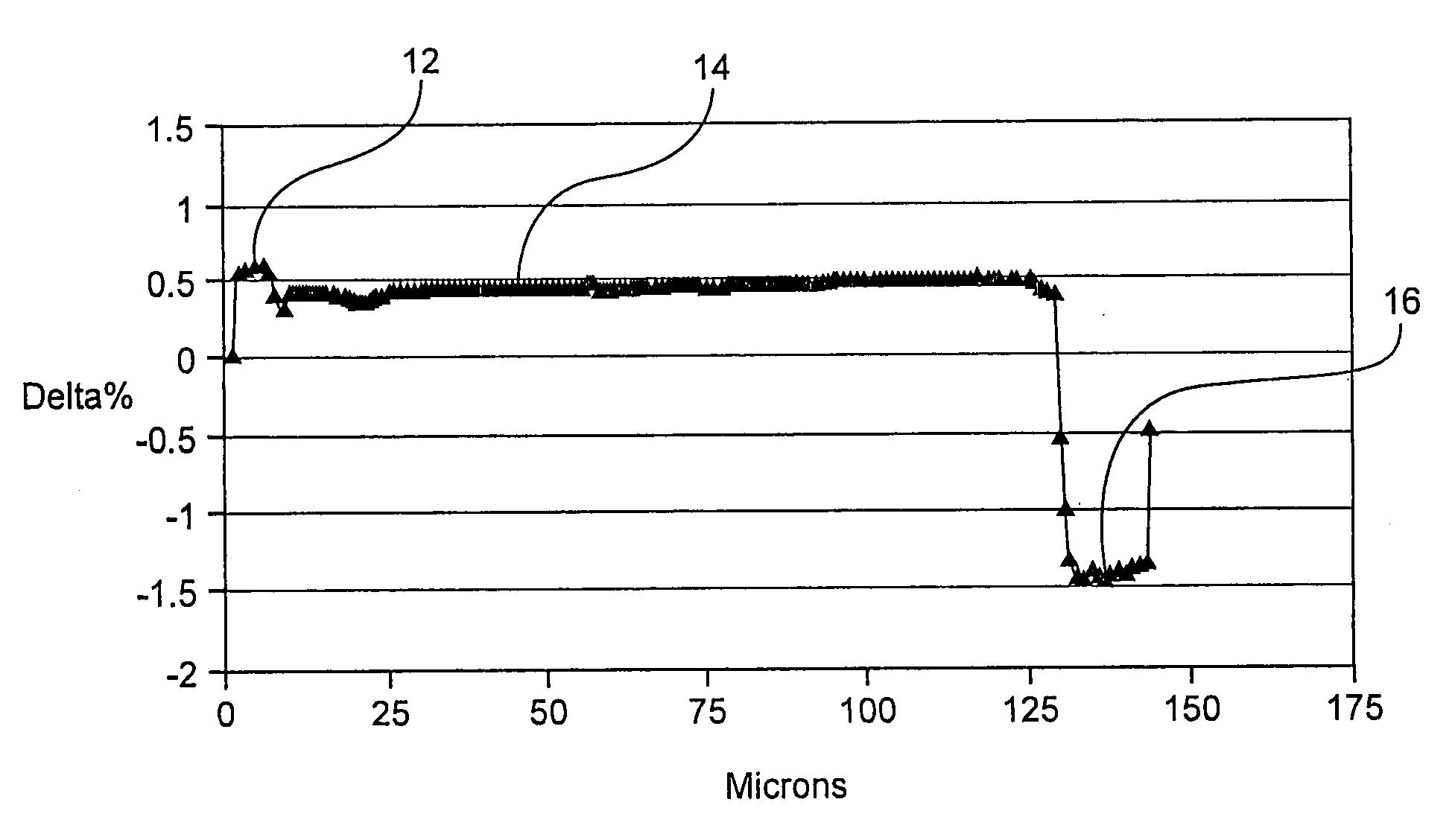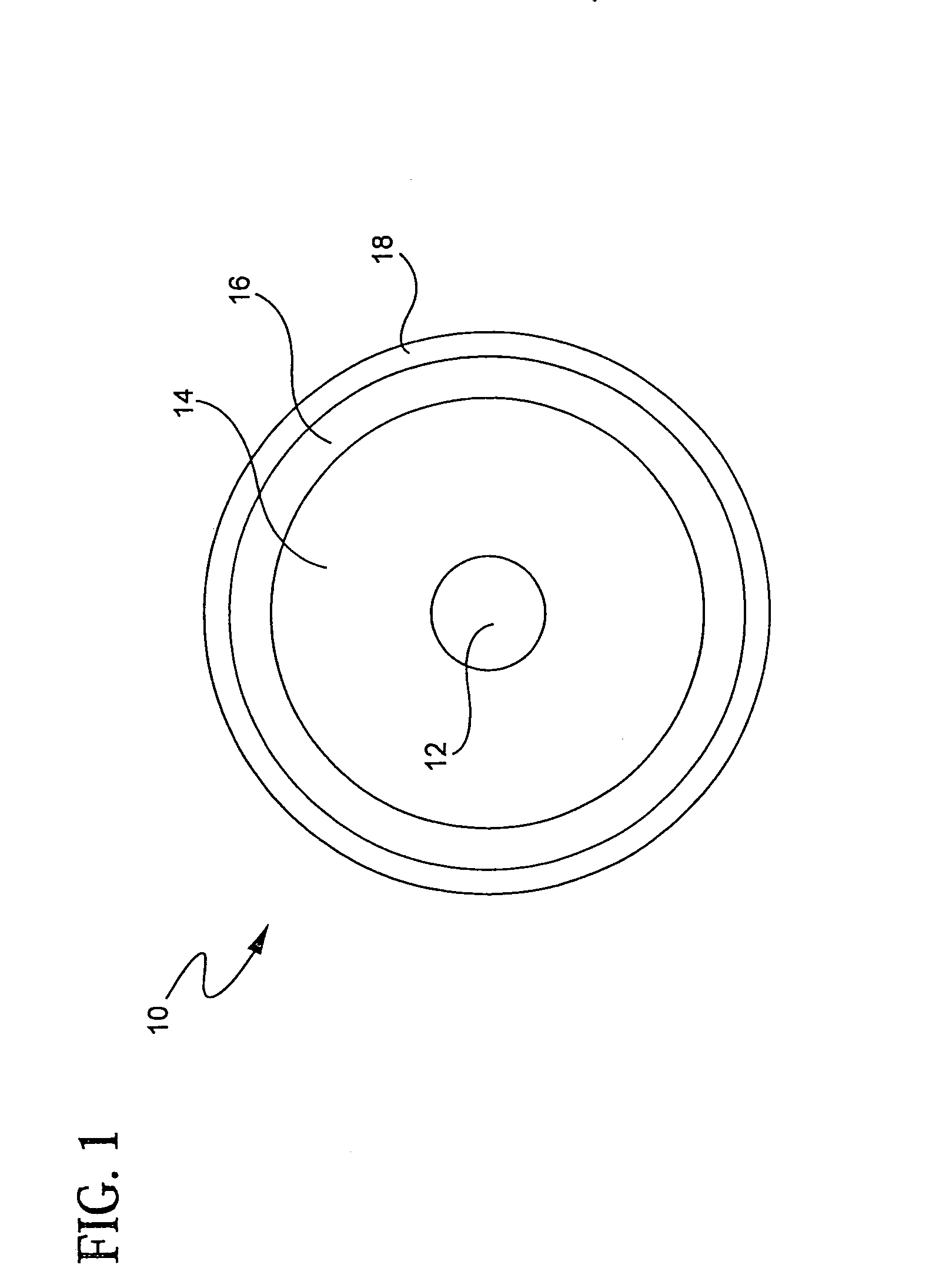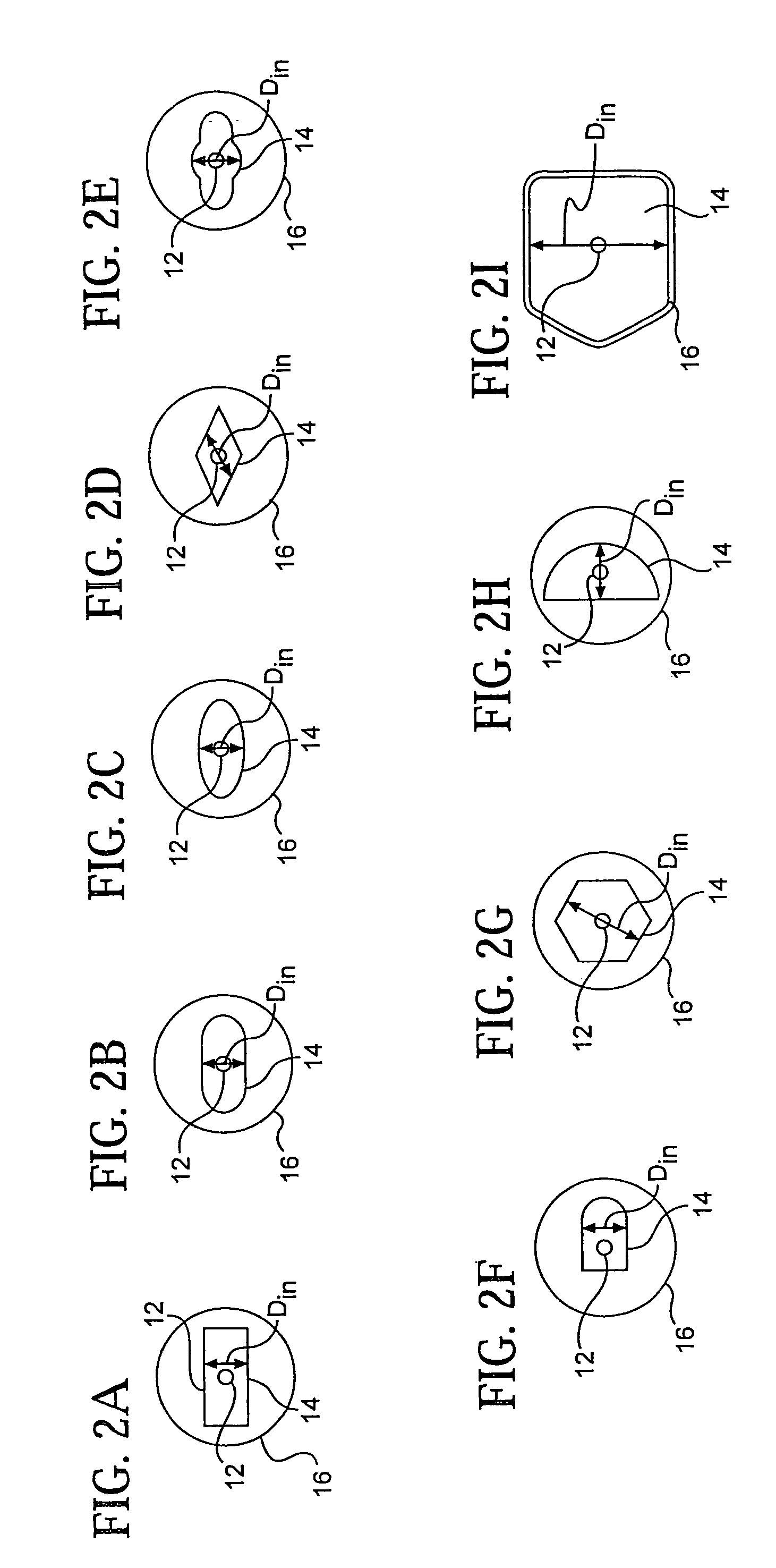Double clad rare earth doped fiber
a rare earth and fiber technology, applied in the field of double clad rare earth doped optical fibers, can solve the problems of low capability of high-power multi-mode optical fibers, low thermal stability of plastics for many applications, and short deployment life, etc., to achieve long deployment life and high coupling efficiency
- Summary
- Abstract
- Description
- Claims
- Application Information
AI Technical Summary
Benefits of technology
Problems solved by technology
Method used
Image
Examples
example 1
[0049]FIG. 4 illustrates a refractive index profile of a first exemplary optical fiber of the present invention. This optical fiber has the cross-section illustrated in FIG. 2I. The distance DIN between two opposing flat sides of this inner cladding crossection is 260 μm. FIG. 4 depicts this optical fiber's refractive index percent delta (relative to that of the pure silica) vs. the distance measured from the core center. The refractive index percent delta is defined herein as (ni2−nS2) / 2ni2, where i=1, 2 or 3 and nS is the refractive index of pure silica. This optical fiber has a Yb doped core 12, a Ge-silica inner cladding (% delta≈0.46) and an outer cladding 16 which doped with Fluorine and Boron. FIG. 4 shows that the relative refractive index difference (percent delta) of the core 12 is about 0.56, that the fluorine / boron doped outer cladding 16 has the refractive index percent delta of about −1.4. The Yb-doped fiber core is single-mode for the wavelengths above 1 μm. If the co...
example 2
[0055]FIG. 7 illustrates a refractive index profile of a second exemplary optical fiber of the present invention. More specifically, FIG. 7 depicts refractive index delta as vs. the radius for the second exemplary optical fiber. This optical fiber has a Yb doped, silica based core 12 which is multi mode at the lasing wavelength of 1100 μm, a silica based inner cladding 14 having two sections of almost the same index of refraction (delta %≈0) and an outer cladding 16 which is doped with fluorine. The NA of the inner cladding is 0.16. FIG. 7 illustrates that the refractive index difference (delta %) of the core 12 is about 0.7, that the fluorine doped outer cladding 16 has the refractive index delta of about −0.7. The core 12 and the first section of the inner cladding 14 are produced by an inside-vapor-deposition (IVD) process. The core Ge-Si soot is deposited inside the glass tube (first section of the inner cladding) and followed by solution Yb-doping of the core soot. The structur...
example 3
[0061]FIG. 10 illustrates a refractive index profile of a third exemplary optical fiber of the present invention. This optical fiber has a Yb doped core 12, a silica based, Ge doped inner cladding 14 with the relative refractive index (% delta %) of 0.3 and an outer cladding 16 which is doped with Fluorine. FIG. 10 shows that the refractive index difference (% delta) of the core 12 is about 0.7 and that the fluorine doped outer cladding 16 has the refractive index % delta of about −0.7. The specific composition for this optical fiber example is:
[0062]Core 12: 0.8wt % Yb2O3; 9.5wt % P2O3; 5.4Wt % GeO2;
[0063]Inner cladding 14: 6 Wt % GeO2;
PUM
| Property | Measurement | Unit |
|---|---|---|
| diameter | aaaaa | aaaaa |
| diameter | aaaaa | aaaaa |
| outer cladding diameter | aaaaa | aaaaa |
Abstract
Description
Claims
Application Information
 Login to View More
Login to View More - R&D
- Intellectual Property
- Life Sciences
- Materials
- Tech Scout
- Unparalleled Data Quality
- Higher Quality Content
- 60% Fewer Hallucinations
Browse by: Latest US Patents, China's latest patents, Technical Efficacy Thesaurus, Application Domain, Technology Topic, Popular Technical Reports.
© 2025 PatSnap. All rights reserved.Legal|Privacy policy|Modern Slavery Act Transparency Statement|Sitemap|About US| Contact US: help@patsnap.com



